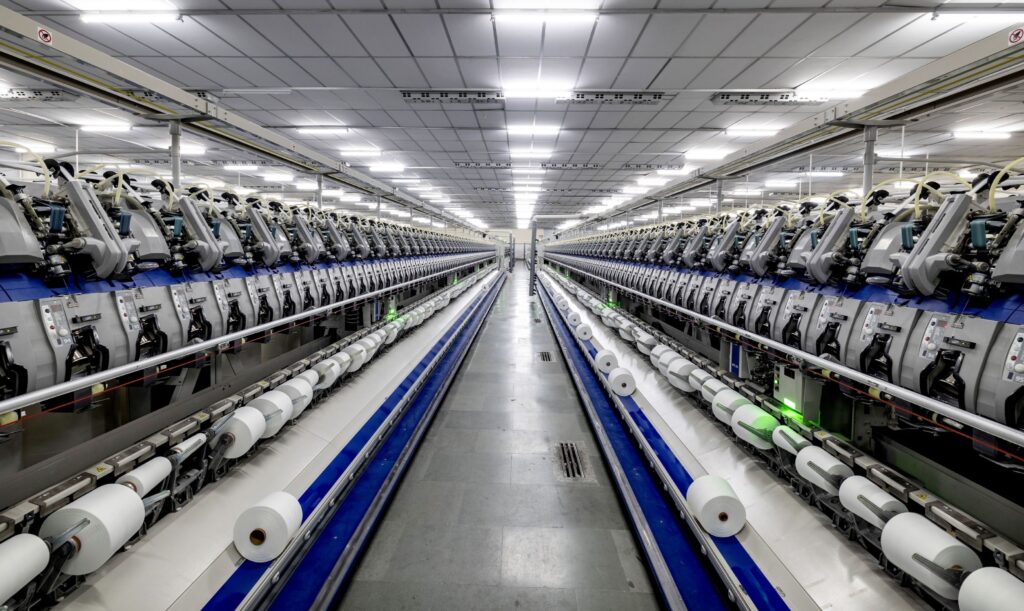At Bharat Tex 2024, The Textile Magazine had an exclusive interaction with Mr. Abhinav Oswal, Executive Director, Nahar Industrial Enterprises, where-in he spoke in detail about the company’s showcase at the show, sustainability and the future. Here are the excerpts.

We are at Bharat Tex 2024, India’s largest textile exhibition, could you elaborate on your company’s participation at this show and the array of products and solutions being showcased?
Certainly, we are thrilled to be a part of Bharat Tex 2024, India’s largest textile exhibition, showcasing the latest and most innovative offerings from Nahar. . Our booth features a diverse range of products, emphasizing innovation, sustainability, and cutting-edge technology. Key highlights include our technical fabrics with aramids and flame retardants, synthetic and cotton blends, and a focus on sustainable fabrics like linen cotton blends Our focus this time is major on sustainable fabric range with linen cotton blends and manufacturing practices that reduce environmental impact.
Looking at this show and the number of companies around, many of whom might be your competitors, why should customers choose your company over others? What sets you apart in meeting their needs?
We understand that there are number of companies participating at Bharat Tex 2024, customers are presented with numerous options. Choosing Nahar over others is not just a selection; it’s a strategic decision
Customers choose Nahar for a distinctive approach rooted in our “Fibre to Fashion” theme, a concept conceptualized by our Prime Minister at Bharat Tex. we have our renowned brand “Monte Carlo,” that help us understanding the needs and pain points of international brands, For eg. Working with reputed brands globally, we offer complete traceability in the supply chain, ensuring transparency and accountability. Our commitment to sustainability, including initiatives like achieving zero coal reliance, utilizing renewable sources, and implementing green chemistry in dyes and chemicals, positions us years ahead of competitors.
Could you provide insights into your company’s manufacturing capacities, growth over the year and recent or upcoming investments within the next few years?
We have weaving capacity of 60 million meters per annum, and processing capacity of 50 million meters annually.
In spinning, Nahar operates six facilities with the latest technology, boasting an installed capacity of 2,64,000 spindles and 8200 rotors.additionally, Nahar Group has expansion plans in the pipeline, which will be announced soon, reflecting the company’s commitment to continuous growth and innovation
Sustainability is a crucial aspect in today’s textile industry. How does your company ensure that its products are manufactured sustainably, and what is your vision for sustainability in the future?
Nahar Group has their own sustainability benchmarks, surpassing international brand standards. Engaging in a unique competition with itself, Nahar aims to be coal-free by 2024, outpacing industry norms and reinforcing its commitment to a green future. Energy initiatives, including 25.8 MW electricity production and 12% reduction in dependency on traditional sources, showcase Nahar’s desire in sustainability. The use of self-free dyeing technology, water recycling, and a ZERO COAL target exemplify a holistic approach. Green chemistry adoption, social responsibility initiatives, and a fully converted CNG transportation fleet further underscore Nahar’s commitment to a sustainable environment.

With India poised to become a USD 10 trillion economy by the decade’s end, the textile industry is expected to play a pivotal role. What growth opportunities do you foresee in the Indian textile sector, and how does your company plan to capitalize on this emerging landscape?
India is the world’s sixth-largest exporter of textiles and apparel. The textile industry contributes about 2.3% to our country’s GDP and is the second-largest employer after agriculture, providing jobs to 45 million people. Currently, China exports is $291 billion in textile & apparel, while India’s export is only $37 billion. If India can reach China’s export levels, the potential for additional jobs and boosting our GDP is enormous, presenting a significant opportunity for growth.
